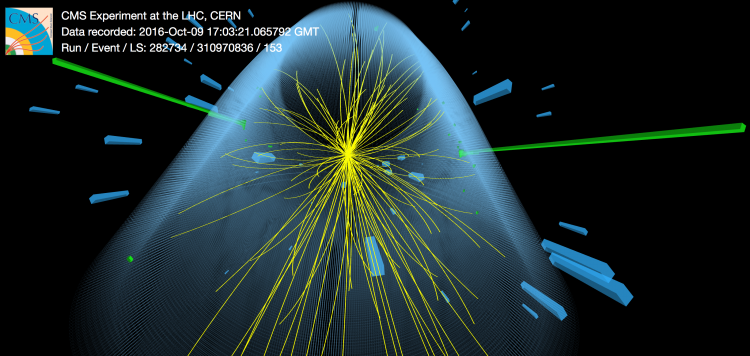
A new result by the CMS Collaboration narrows down the mass of the Higgs boson to a precision of 0.1%.
After reporting the observation of the Higgs boson at the CERN LHC in 2012, scientists the ATLAS and CMS Collaborations have been busy understanding exactly its place within the standard model of particle physics. Any straying from expectations could be an indication of new physics.
One important goal was to determine the mass of the Higgs Boson precisely, and the CMS Collaboration have just announced the most precise measurement of the Higgs boson’s mass achieved so far. CMS physicists recently measured the mass of the Higgs boson to be 125.35 GeV with a precision of 0.15 GeV, an uncertainty of roughly 0.1%! This very high precision was achieved thanks to the enormous amount of work spent over many years to carefully calibrate and model the CMS detector when it measures the particles necessary for this measurement (electrons, muons, and photons).
The new result is based on data collected at the Large Hadron Collider at CERN between 2011 and 2016. To get this result, CMS physicists combined data from two very different, very accurate measurements. One measurement looked at decays to two Z bosons, which subsequently decay into electron or muon pairs, and the other focused on decays to two photons that can be seen in Figure 1.

Figure 1: The signal of the Higgs boson decaying to two photons, measured with the CMS lead tungstate crystal calorimeter.
The progressively increasing precision of the Higgs boson mass measurements made by the CMS Collaboration is shown in Figure 2. Using data obtained in 2011 and 2012 the mass was measured as 125.06 ± 0.29 GeV. Using the 2016 data, this measurement improved to 125.46 ± 0.17 and with everything combined gives the best mass determination yet of 125.35 ± 0.15 GeV.

Figure 2: Different measurements of the Higgs boson mass performed by the CMS collaboration.
This new precise measurement of the Higgs boson’s mass will not, at least not on its own, lead us in a new direction of physics. But it does add another piece to the puzzle of the exciting world of subatomic particles, and its connection to the world around us. The Higgs boson mass is an unrestricted parameter in the physics theory describing subatomic particles called the Standard Model, and the value of the Higgs boson mass is connected to understanding the long-term stability of the universe. Its precise knowledge is needed to estimate many of the properties of the Higgs boson and the phenomena that we can observe at future colliders.
Read more about these results in the CMS Physics Analysis Summaries:
- Log in to post comments

